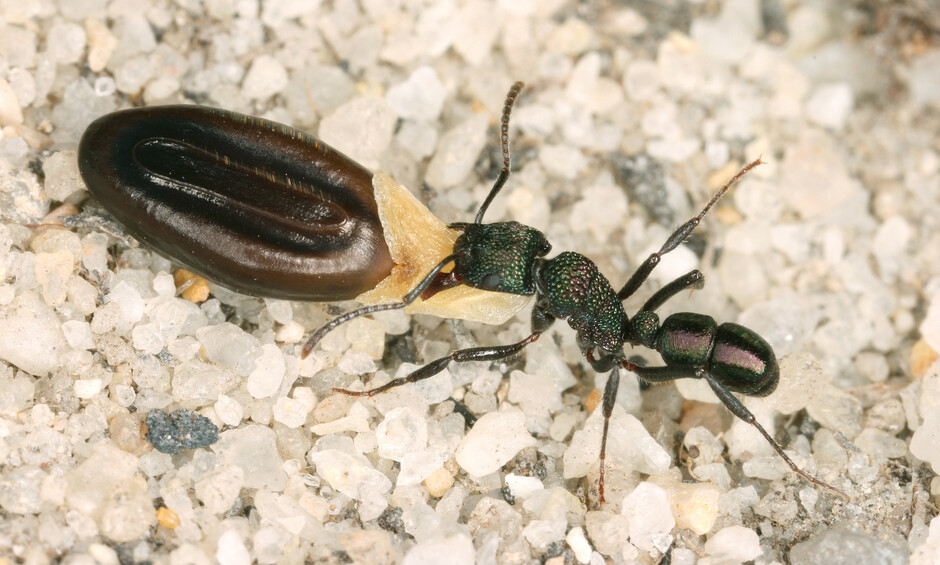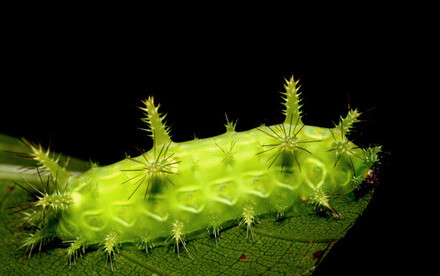14 Aug 2024
For the First Time, Ecologists Put an Insect Group on a Century-old Map of Biodiversity

Seed being dispersed by an ant of the Rhytidoponera genus in Australia. Photo Credit: Benoit Guénard.
The distribution of species around the globe is not a random process but an outcome resulting from several evolutionary mechanisms as well as past and current environmental limitations. As a result, since the mid-19th century, biologists have identified several main regions, called biogeographic realms, that depict these large ensembles of species around the world. These biogeographic realms represent one of the most fundamental descriptions of biodiversity on Earth and are commonly used in various fields of biology.
For nearly 150 years, however, the characterisation of these biogeographic units resulted exclusively from the study of vertebrate (e.g. birds, mammals) and plant groups. These latter groups, however, represent only a minority of the species found on Earth. In contrast, hyperdiverse groups like insects were left aside from such efforts that offer a fundamental tool for conservation planning to understand biodiversity distribution.
Recently, ecologists from The University of Hong Kong (HKU) and their collaborators in Japan, mapped global biogeographic regions for a major insect group, ants, providing the first effort and a set of novel approaches to include these organisms. This work, published in Nature Communications, provides the best window yet for understanding the distribution of insects and is of significance for global conservation.
Insects, ‘the little things that run the world’, make up over 55% of all described species. However, the knowledge gap regarding their distribution information impedes scientists to map their biogeographic regions. ‘A first step to protect species, and thus biodiversity, is to understand where those are located,’ says Professor Benoit GUÉNARD, senior author of the study, and head of the Insect Biodiversity and Biogeography Laboratory at HKU School of Biological Sciences (SBS).
To tackle this challenge, Professor Guénard has been leading an international team to assemble the distribution data of nearly 16,000 ant species for more than a decade. Ants are among the most widespread and ecologically dominant insects, weighting as much as twice the combined mass of wild birds and mammals as shown in one of Professor Guénard’s team previous studies. For an insect group, they are relatively well-documented. The hard work of Professor Guénard’s team, compiling data from over 300 years’ research of ants, makes it possible to use advanced techniques, including bioinformatics and machine learning, to predict and analyse their distribution. In the end, they were able to produce the first biogeographic map of ants.
This map shows the division of ant’s global territory into 9 large biogeographic realms. ‘Interestingly, when I was comparing this map with those for vertebrates and plants, I saw so many similarities,’ says the first author Mr Runxi WANG, a PhD candidate from School of Biological Sciences, ‘with ants and plants sharing several regions that are not found in vertebrates.’
The further analysis confirms the authors’ observations — the biogeographic regions are very similar among different taxa, but plants are more similar with ants than with any vertebrate groups. ‘It’s not very surprising because we know that ants and plants have very close ecological and evolutionary relationships. For instance, ants help tens of thousands of plants to disperse their seeds and protect many more from herbivores. ‘They have been co-evolved for millions of years,’ explains Professor Guénard, ‘but it is one of the first evidences showing such significant biogeographic consequences.’
This result indicates that many similarities between animals and plants may be not captured by vertebrates. ‘Ants alone cannot represent the hyperdiversity of all insects, but their similarities to plants are probably not an exception,’ adds Mr Wang, ‘we certainly need greater efforts to include more insect groups in the future to depict the global picture of biodiversity.’
The journal paper can be accessed at: https://www.nature.com/articles/s41467-024-49918-2







